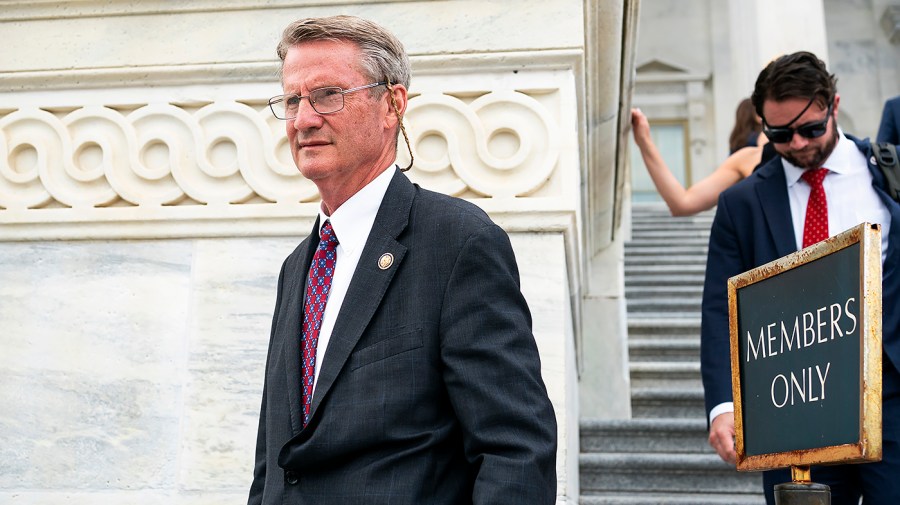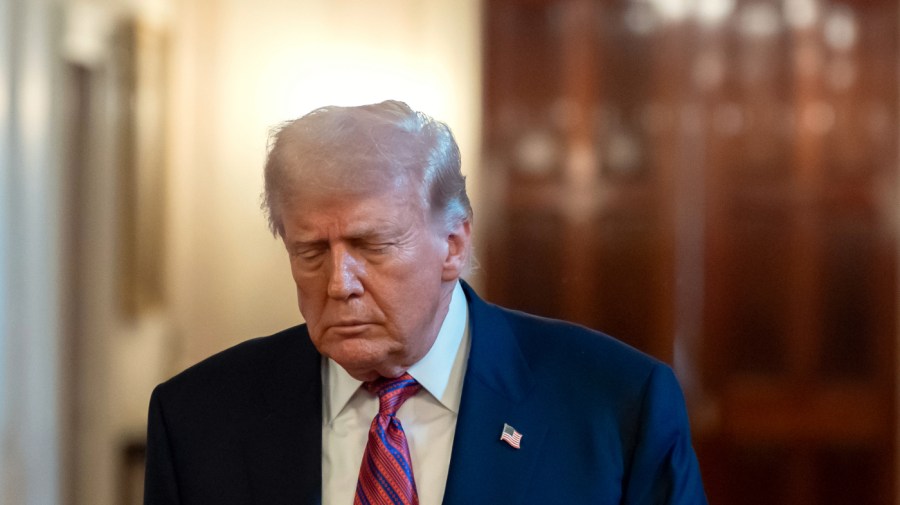Dow drowns 890 points after Trump refuses to exclude the recession

The stock market started the week with severe losses on Monday after President Trump refused on Sunday to exclude the US economy in recession.
The Dow Jones industrial average of 890 points was losing Monday, decreased by 2.1 percent. The Nasdaq boat closed with a loss of 4 percent, and the S& P 500 index closed by 2.7 percent.
The shares have been steadily decreased since the beginning of March, in response to a series of amazing economic data and Whipsaw tariff ads from the Trump administration. But the sale was intensified on Monday after Trump retracted his view of the American economy in an interview on Sunday.
“I hate prediction of such things.”
“There is a transitional period, because what we do is very big. We return wealth to America. This is a big thing. There are always periods – it takes some time. It takes some time. But I think it should be great for us. I mean, I think it should be great.”
All three major indexes are now less than their levels on November 5, 2024, – The day of Trump’s re -election, which led to a major gathering in the stock market – despite its brief recovery of more severe losses before the opening bell. The Nasdaq Stock Exchange decreased by 4.5 percent the day before to climb a little higher.
Wall Street has become increasingly afraid of stagnation after public and private job data, and consumer confidence polls and inflation readings showed that the economy is back away from the progress made during the end of the Biden administration.
Trump also threatened markets and business leaders with a continuous tariff for Mexican, Canadian and Chinese products. Last week, the President underwent all Mexican and Canadian goods to 25 percent of the customs tariff, but he later gave imports that complied with the United States and Mexico-Canada (USMCA) agreement, and hit NAFTA’s rewriting during the first period of Trump.
Trump also threatened to impose an additional tariff on Canadian wood and dairy products, and he has repeated plans to impose mutual import taxes, unlike the definitions that other countries set on American products.
While the Mexican government has stopped revenge, the Canadian federal government and many of the leaders of the provinces imposed American tariffs or goods, and new fees on Canadian energy exports and removing some American products from shelves.
The Ontario government is applying additional fees by 25 percent, starting on Monday, on electricity exports to three American states in response to the American definitions in Canada.
The Ontario government said these additional fees will affect electricity sales for 1.5 million homes and companies throughout Michigan, Minnesota and New York. In total, it can cost up to $ 400,000 a day.
Trump’s trade war has stimulated great concern between economists and even some party members about the potential impact of high costs and less exports on the American economy.
The director of the National Economic Council, Kevin Haysit, sought to get rid of fears on Monday, on the pretext that “the first quarter will collide with the positive category”, even with anxiety about the economy at the country level.
“[I’d] Just be very careful, Joe, of talks about the recession or not, given that we have two passive quarterly, we used to be a stagnation under Biden’s leadership, and then it was not the recession. “
He added: “I think what will happen is that the first quarter will ascend in the positive category, and after that the second quarter will start as everyone sees the fact that the tax cuts.”
It was updated at 4:10 pm EST.




Post Comment